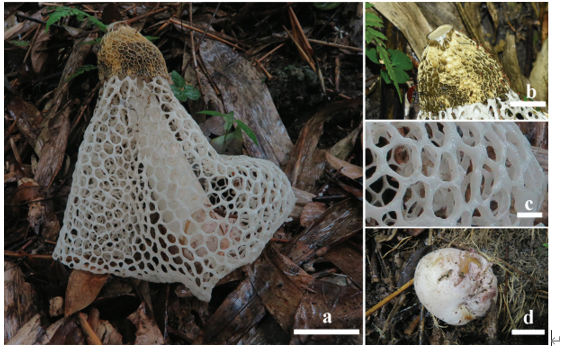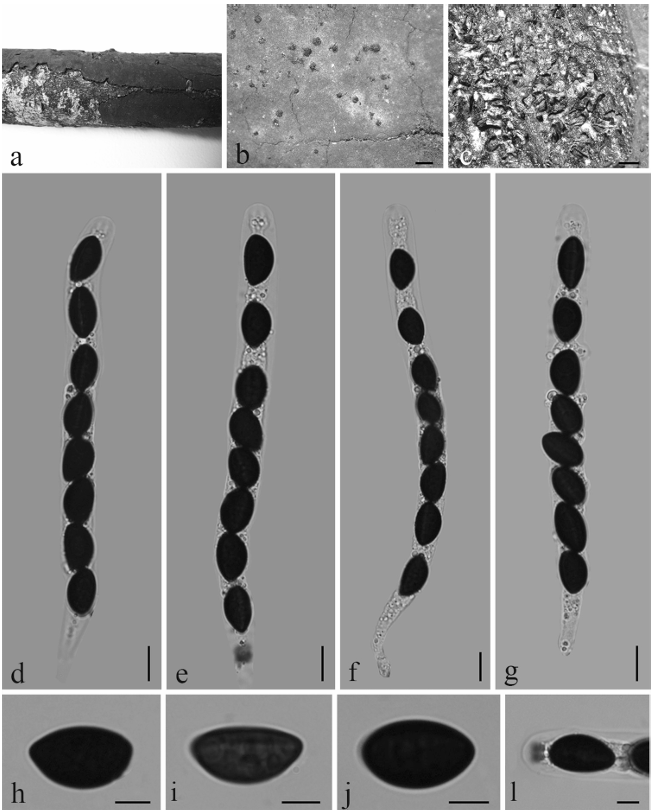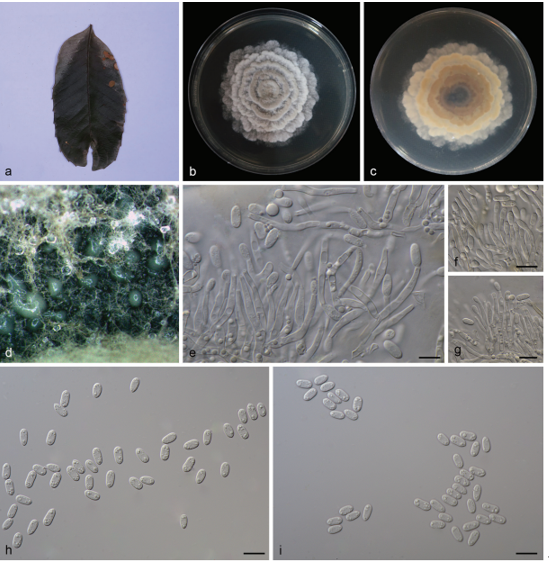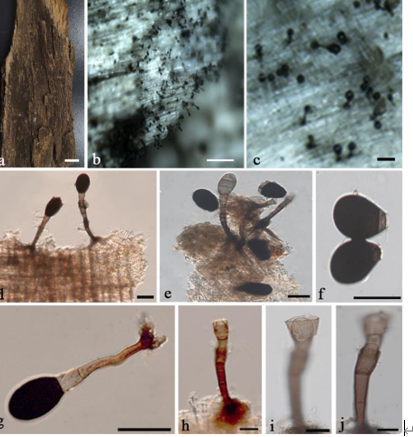Inosperma muscarium Y.G. Fan, L.S. Deng, W.J. Yu & N.K. Zeng, sp. Nov2021.
MycoBank: MB840527
Holotype. China, Hainan Province, Ledong Li Autonomous County, Yinggeling substation of Hainan Tropical Rainforest National Park, under Castanopsis forest, at 19°1'20"N, 109°23'33"E, alt. 550 m, 26 April 2021, FYG6091 (FHMU3162), GenBank accession number: ITS (MZ373982); LSU (MZ373991) and rpb2 (MZ388093)
Morphological description
Sexual morph: small to medium-sized. Pileus 25–60 mm diam., conical convex to convex when young, becoming broadly convex to plano-convex with a small indistinct umbo when mature, margin slightly incurved when young, becoming somewhat reflexed with age. Surface dry, smooth with distinct ivory white (5A1) veil layer around the disc when young, then appressed with indistinct veil remnants, fibrillose-rimulose elsewhere, margin usually strongly rimose with age; yellowish brown (5D8) to chocolate brown (5E8) around the center and on the fibrils, yellowish brown (5C6) elsewhere, yellowish brown (6C6) to slightly dark brown (6E7) all over the basidiomata when overmatured. Lamellae rather crowded, adnexed, initially pure white to pale off-white (4B1), becoming grayish white (5B1) to yellowish white (4A2), dirty yellow (4A3) to yellowish brown (5B4) when overmatured, 1.5–3 mm wide, edge fimbriate, faint serrate to somewhat wavy. Stipe 35–72 × 3–8 mm, central, solid, terete, equal with a slightly swollen apex and base; with sparse fibrils at apex, longitudinally fibrillose downwards the stipe, with white tomentose hyphae at the base; initially white (5A1) to cream white(3A2), yellowish (4A3) or brownish (5A3) with age, brown (5B6) to dark brown (5C5) when old. Context solid, fleshy in pileus, 0.5–1 mm thick at midradius, 1.5–4.5 mm under the umbo, white to ivory white (5A1) at first, becoming brownish white (5B2); fibrillose and striate in the stipe, white to yellowish (4A2) or flesh color (4B3). Odor fungoid, slightly grassy or mild.
Asexual morph: s. [180/9/9] 8–10(11) × 5–6 (6.5) μm, Q = (1.15)1.42–1.86(2.00), Qm=1.63, mostly ellipsoid to enlongate ellipsoid, occasionally sub-phaseoliform, smooth, thick-walled, yellowish, apiculus small, indistinct, with a spherical to ellipsoid yellowish brown oil-droplet inside. Basidia 17–24 × 7–9 μm, clavate to broadly clavate, obtuse at apex, slightly tapering towards the base, 4-spored, sterigmata 2–4 μm in length, thin-walled, hyaline or pale yellow, with oily drops in various sizes with age. Pleurocystidia none. Lamella edge sterile. Cheilocystidia 36–50 × 9–14 μm, abundant and crowded, mostly clavate, broadly clavate to enlongate-clavate, rarely balloon-shaped, apices rounded to obtuse, or occasionally subcapitate, thin- to slightly thick-walled, septate, often constricted at septa, colorless to yellowish, sometimes with golden yellow inclusions. Hymenophoral trama 75–108 μm thick, sub-regular, colorless to yellowish, composed of thin-walled, smooth, cylindric to mostly inflated, hyphae 12–25 μm wide, somewhat constricted at the both ends of per hyphae. Pileipellis a cutis, sub-regular, composed of thin-walled, brown to yellowish brown, cylindrical, slightly encrusted hyphae 4–10 μm wide. Pileal trama colorless, regular to subregular, hyphae 12–25 μm wide. Stipitipellis a cutis, regularly arranged, occasionally with small clusters of terminal cheilocystidoid cells at the stipe apex, cheilocystidoid cells 31–47 × 9–10 μm, rare, clavate to enlongate clavate, hyaline or pale yellow, thin- to slightly thick-walled, some with golden yellow inclusions. Caulocystidia not observed. Oleiferous hyphae 4–13 μm wide, scattered in pileus and stipe tramal tissue, yellow or bright golden yellow, smooth, often bent, sometimes diverticulate. Clamp connections present, common in all tissues.
Cultures:
Habitat: Gregarious in clusters, usually scattered with numerous clusters under Castanopsis forest, late March to August in tropical China.
Distribution: . China (Hainan, Guangdong, Guangxi), Thailand.
GenBank Accession: its MZ373978; lsu MZ373988; rpb2 MZ388089. Its MZ373979; lsu MZ373989; rpb2 MZ388090 . its MZ373980 ; rpb2 MZ388091. Its MZ373981; lsu MZ373990; rpb2 MZ388092.its MZ373982; lsu MZ373991; rpb2 MZ388093. Its MZ373983; lsu MZ373992; rpb2 MZ388094. Its MZ373984; lsu MZ373993; rpb2 MZ388095 .its MZ520549; lsu MZ520550; rpb2 MZ542730.
Notes:
Reference: [1] Deng, L. , Kang, R. , Zeng, N. K. , & Fan, Y. G. . (2021). Two new inosperma (inocybaceae) species with unexpected muscarine contents from tropical china. MycoKeys.
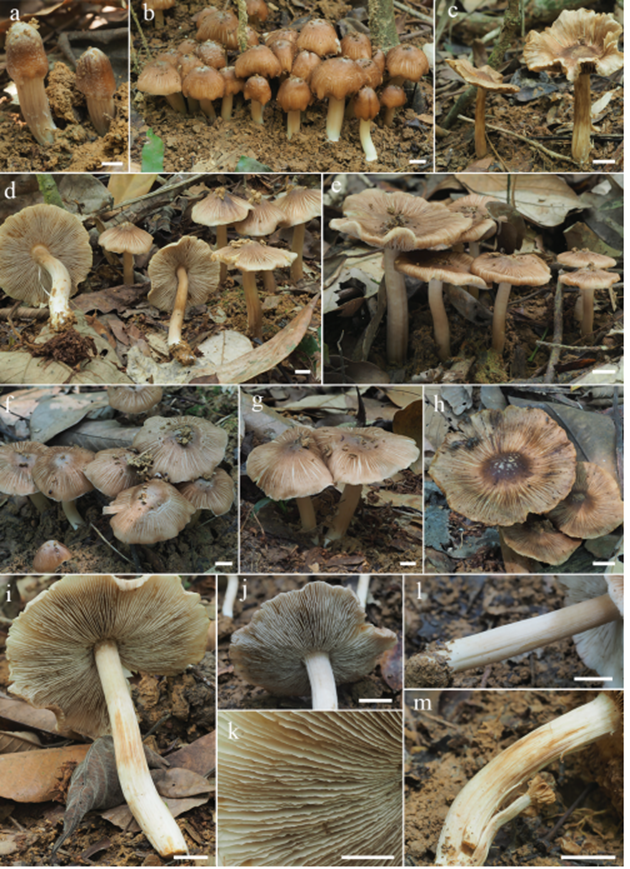 Basidiomata of Inosperma muscarium a–e basidiomata f–h rimose to rimulose pileus i lamellae j–k lamellae edge l–m stipe surface. a–b, d, f–g, i–m FHMU3162 (holotype) c, e FYG6092 (FHMU3163) h FYG6093 (FHMU3164). Scale bars: 10 mm (a–m). Photos by Y.-G. Fan.
Basidiomata of Inosperma muscarium a–e basidiomata f–h rimose to rimulose pileus i lamellae j–k lamellae edge l–m stipe surface. a–b, d, f–g, i–m FHMU3162 (holotype) c, e FYG6092 (FHMU3163) h FYG6093 (FHMU3164). Scale bars: 10 mm (a–m). Photos by Y.-G. Fan.
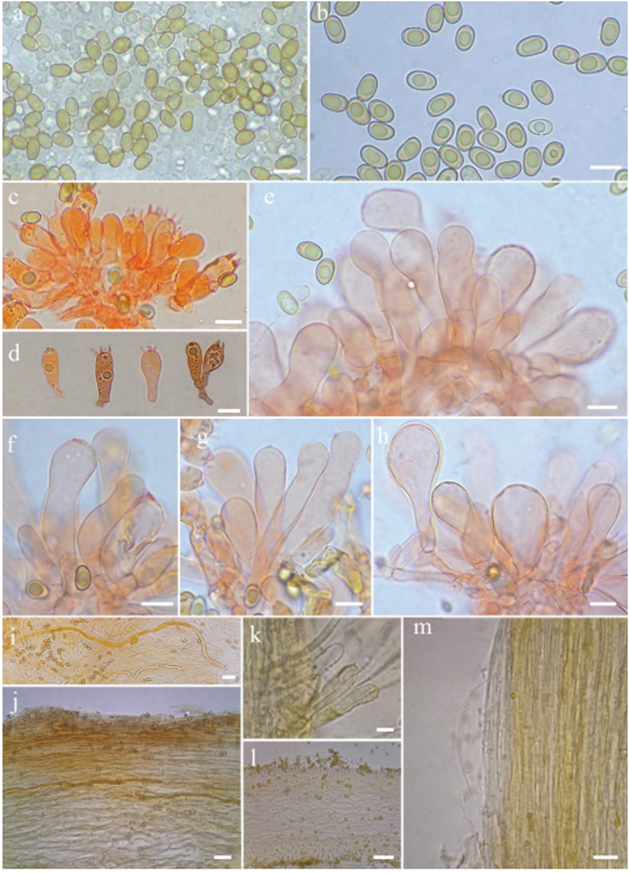
Microscopic features of Inosperma muscarium (FHMU3162, holotype) a–b basidiospores c–d basidia e–h cheilocystidia in clusters i oleiferous hyphae j pileipellis and pileal trama k terminal hyphae at the stipe apex l hymenophoral trama m stipitipellis and stipe trama. Scale bars: 10 μm (a–m). Photos by L.-S. Deng


